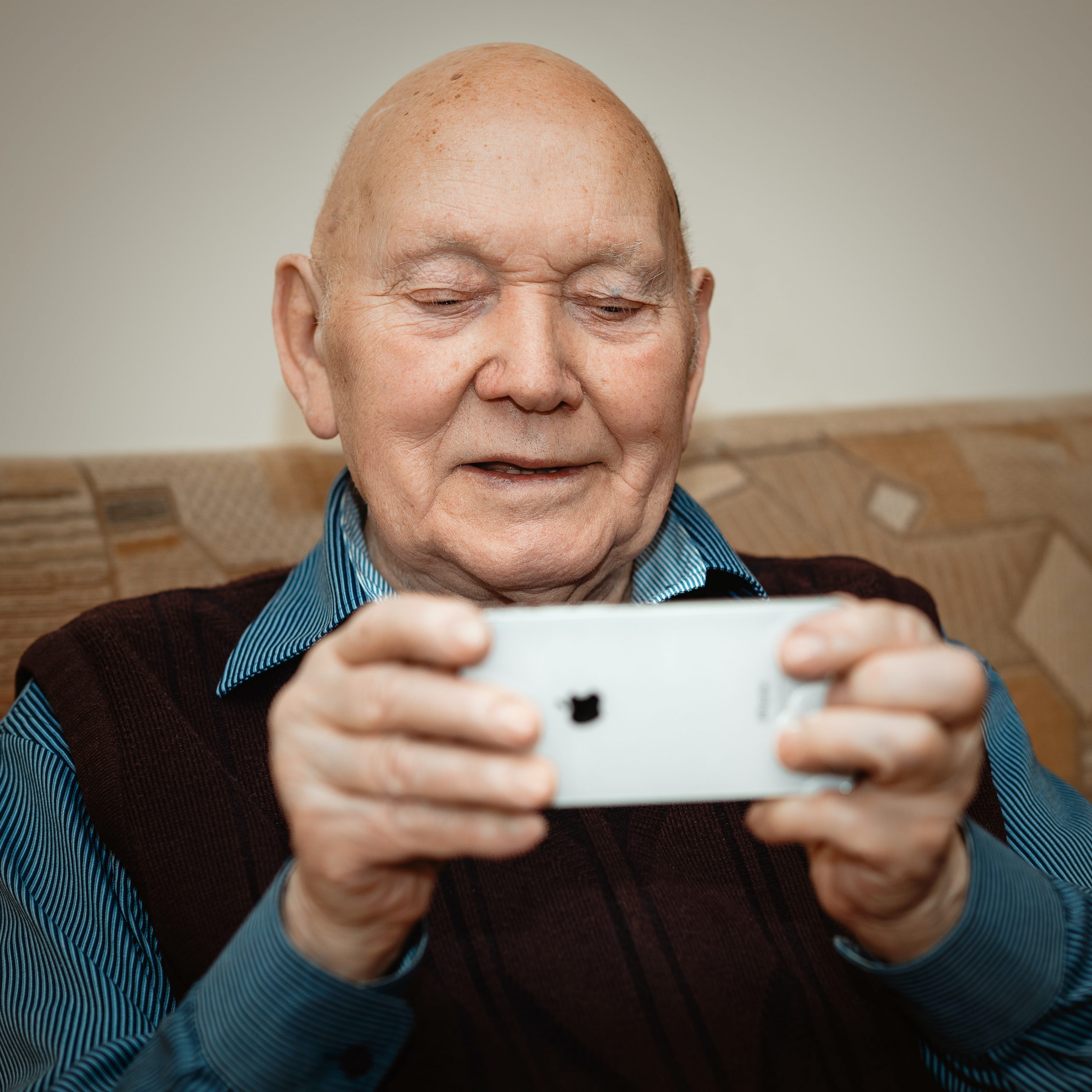The intelligent assistant is intended to support senior citizens to stay active in their own living environment. Cooperation in the European-Japanese lighthouse project e‑VITA.
Together with 11 European and 11 Japanese partners, the University of Siegen is developing a virtual assistant for smart aging in your own four walls. The e‑VITA project creates an intelligent assistant that older people can use individually at home — tailored to their own living environment and personal wishes and ideas. “Our goal is to empower older people to remain independent and active, to manage their daily activities and to improve their well-being,” explains Professor Dr. Marc Hassenzahl, Dean of Faculty III at the University of Siegen. The focus of the development of the virtual coach lies in the areas of mobility, social interaction, leisure time, cognition, physical activity, mood and spirituality.
It will be the task of the Siegen researchers to design user-friendly language interaction and the design of the assistant in so-called practice laboratories together with the users — i.e. to create a trustworthy assistant that is specifically geared towards the older target group. To this end, the university would like to cooperate with the municipalities and social associations in Siegen-Wittgenstein, among other things, so that the system can also be linked to their social services and activities. The coach is controlled through natural language interaction. This has two goals: On the one hand, it enables the person and the coach to converse and understand each other better. On the other hand, the coach should create trust and at the same time provide information in accordance with data protection regulations through the discussions. In addition, question-answer functions from knowledge graphs such as Wikipedia and data sets from various sensors are used. For example, the system evaluates the data from smart household appliances and, if necessary, can also connect health-related devices such as blood pressure monitors or fitness armbands. Based on all this information, the coach should give personalized recommendations for the elderly in the different languages of the participating countries. For example, the coach could remind them to exercise or walk regularly, read from the Bible, or recommend a cultural event — as needed. It could also help to make it easier to chat with family or friends, to eat healthier or to network with the communities and in the neighborhoods.
Which functions and tasks the coach is supposed to take on and which shape it should take on is determined in the course of the project together with the elderly. “It is crucial for the project that the users accept the technologies. We can only achieve this if we make the users themselves the focus of design and development, ”says Elisa Irlandese, project officer for the European Commission. Dr. Rainer Wieching agrees. He is the overall project manager of e‑VITA and an expert in active aging, healthy living and social robotics.
Should the virtual coach stay discreetly in the background or always be present? Which functions are useful, which are disruptive or even a hindrance? And what about data protection — after all, not everyone wants to divulge all of their data. “We design for real life and for real people, not for the laboratory,” emphasizes Dr. Matthias Laschke. “The technologies that we develop in the project should not only be practical and pragmatic, but also meet individual needs — for example security and autonomy — and be fun,” he explains.
The scientists later provide the older users with a support system in order to learn and use the virtual coaching system and to manage their data independently. The coach will be tested and evaluated in France, Germany, Italy and Japan. In the medium term, it should be possible to use the offer throughout Europe and Japan, which is supported by an international application study and, if necessary, enables further financing rounds and studies. “South Westphalia is a rural region with a falling number of general practitioners and an increasing number of elderly people. This demographic and structural development applies to many rural regions in the EU and also in Japan ”, explains Prof. Dr. Volker Wulf the cooperation and the benefits of the coach. Wulf is prorector for digital and regional affairs and professor for business informatics and new media at the University of Siegen.
Project partners in Germany include the Fraunhofer Institute IAIS, the Diocesan Caritas Association of the Archdiocese of Cologne, as well as other partners from Europe, including the public hospital association of Paris, the Italian National Institute for Aging Research and the AGE Platform Europe, which are responsible for the issues across Europe the aging society sets in. Project partners in Japan include TOHOKU University and the National Institute for Gerontology and Geriatrics (NCGG) and the National Institute for Advanced Industrial Science and Technology (AIST). The University of Siegen acts as the EU coordinator for the project. A first online conference with all partners as well as representatives of the EU Commission and the Japanese Ministry of Science took place at the start of the research in January. The three-year project is financed by the EU framework program for research and innovation Horizon 2020 and by public funding from Japan with a total of four million euros in the EU plus four million euros in Japan. The University of Siegen will receive around 750,000 euros from this.
Source: https://www.uni-siegen.de/start/news/oeffentlichkeit/929658.html
